Eureka EventsAwaiting you in Eureka
Eureka is one of the best-preserved mining cities in the American West.
Silver strikes made here in 1864 by prospectors from Austin proved uneconomical to work at first because of the high lead content of the ores. In 1869 the first of 16 successful smelters was constructed and during the middle 1870s when the Eureka & Palisade Railroad was extended south from the main line Eureka overtook Austin in size and mining productivity. By 1878, when Austin had begun to decline, Eureka had a population of about 9,000 and had taken second place among Nevada cities.
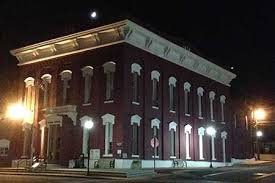 Fifty mines produced lead, silver, gold, and zinc for the smelters, which could process more than 700 tons of ore a day. In the process Eureka became famous as the “Pittsburgh of the West” because of the black smoke squeezing out of smelter smokestacks to smear the sky and poison the hardy desert vegetation (and the residents too). There were dozens of saloons, gambling houses and bawdy houses, three opera houses, two breweries, five volunteer firefighting companies, and two companies of militia as well as the usual complement of doctors, lawyers, merchants, bankers, hotels, newspapers, and other businesses.
Fifty mines produced lead, silver, gold, and zinc for the smelters, which could process more than 700 tons of ore a day. In the process Eureka became famous as the “Pittsburgh of the West” because of the black smoke squeezing out of smelter smokestacks to smear the sky and poison the hardy desert vegetation (and the residents too). There were dozens of saloons, gambling houses and bawdy houses, three opera houses, two breweries, five volunteer firefighting companies, and two companies of militia as well as the usual complement of doctors, lawyers, merchants, bankers, hotels, newspapers, and other businesses.
Mining production peaked in 1882 and tailed off rapidly after 1885; by 1891 the major mines had shut down, and production lapsed into the long snooze that had claimed Austin a decade earlier.
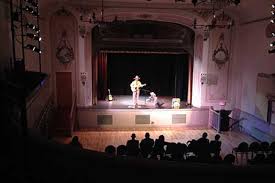 Many of Eureka’s buildings are impressive, but the city’s architectural jewel is the magnificently refurbished Eureka Opera House, open for visitors during business hours. The Eureka Sentinel Building a block south has been converted to a wonderful museum. Local area information is available here as well, including a self-guided tour leaflet with information about many of the interesting buildings around town.
Many of Eureka’s buildings are impressive, but the city’s architectural jewel is the magnificently refurbished Eureka Opera House, open for visitors during business hours. The Eureka Sentinel Building a block south has been converted to a wonderful museum. Local area information is available here as well, including a self-guided tour leaflet with information about many of the interesting buildings around town.
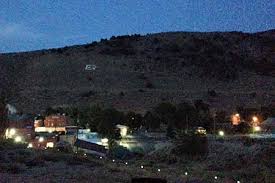 Some structures are less remarkable to look at than to know about. The Farmers and Merchants Bank building, for example, was originally a brewery, connected with the hotel across the street by an underground tunnel. The boom days were long over when the bank was organized by former District Attorney Edna Plummer, but it was solid enough to remain open through the National Bank Holiday of 1933. Banks were ordered to remain closed after the conclusion of business on the stated date, but the Eureka Bank avoided the closing by not concluding business, instead staying open day and night until the “holiday” ended.
Some structures are less remarkable to look at than to know about. The Farmers and Merchants Bank building, for example, was originally a brewery, connected with the hotel across the street by an underground tunnel. The boom days were long over when the bank was organized by former District Attorney Edna Plummer, but it was solid enough to remain open through the National Bank Holiday of 1933. Banks were ordered to remain closed after the conclusion of business on the stated date, but the Eureka Bank avoided the closing by not concluding business, instead staying open day and night until the “holiday” ended.
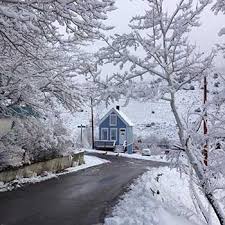 About those tunnels: the story is that because Eureka’s breweries were located on opposite ends of town, the heavy winters (and the availability of skilled miners) prompted the business people to drive tunnels underground from one end of town to the other in order to ensure the prompt delivery of beer to the saloons along Main Street. But according to family recollection, Nevada governor Reinhold Sadler used a tunnel to get from his house on Monroe Street to his Main Street store in the winter so that he wouldn’t have to meet his neighbors. Much of the old tunneling has collapsed or is unsafe, but in its heyday it was quite comfortable to use, fancy, even, with bricked walls, and arched chambers reminiscent of medieval dungeons.
About those tunnels: the story is that because Eureka’s breweries were located on opposite ends of town, the heavy winters (and the availability of skilled miners) prompted the business people to drive tunnels underground from one end of town to the other in order to ensure the prompt delivery of beer to the saloons along Main Street. But according to family recollection, Nevada governor Reinhold Sadler used a tunnel to get from his house on Monroe Street to his Main Street store in the winter so that he wouldn’t have to meet his neighbors. Much of the old tunneling has collapsed or is unsafe, but in its heyday it was quite comfortable to use, fancy, even, with bricked walls, and arched chambers reminiscent of medieval dungeons.
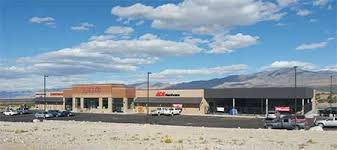 The famous Raine’s Market downtown has closed, replaced by Raine’s Supermarket, hardware store and bank just out of town westbound. It’s an impressive accomplishment, modern, capacious and well-managed . . . and yet nostalgia persists for the old place, the oiled floors, the high pressed tin ceilings and the mooseheads on the walls above the corn flakes.
The famous Raine’s Market downtown has closed, replaced by Raine’s Supermarket, hardware store and bank just out of town westbound. It’s an impressive accomplishment, modern, capacious and well-managed . . . and yet nostalgia persists for the old place, the oiled floors, the high pressed tin ceilings and the mooseheads on the walls above the corn flakes.
The Sundown Lodge and the Gold Country Inn on Main Street offer overnight accommodations, and the dining options are quite good.
Tax money derived from the gold mines at the far northern end of the county has built a new high school, a three-story Firehouse, and other modern community facilities in Eureka including the enclosed pool open six days a week year-around.
The country around Eureka will probably always provide excellent hunting, and simply breathing in the cedar-scented air of the wide open spaces is an act of pure pleasure, utterly unimaginable to the people who lived here breathing its poisonous smoke in the 19th century.


